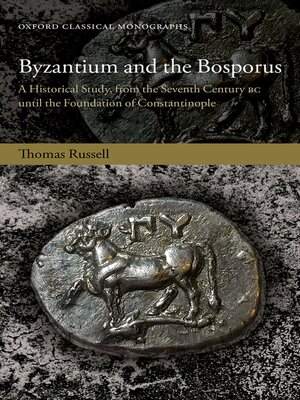Byzantium and the Bosporus
ebook ∣ A Historical Study, from the Seventh Century BC until the Foundation of Constantinople · Oxford Classical Monographs
By Thomas Russell

Sign up to save your library
With an OverDrive account, you can save your favorite libraries for at-a-glance information about availability. Find out more about OverDrive accounts.
Find this title in Libby, the library reading app by OverDrive.



Search for a digital library with this title
Title found at these libraries:
| Library Name | Distance |
|---|---|
| Loading... |
In ad 330 the Emperor Constantine consecrated the new capital of the eastern Roman Empire on the site of the ancient city of Byzantium. Its later history is well known, yet comparatively little is known about the city before it became Constantinople and then Istanbul. Although it was just a minor Greek polis located on the northern fringes of Hellenic culture, surrounded by hostile Thracian tribes and denigrated by one ancient wit as the 'armpit of Greece', Byzantium did nevertheless possess one unique advantage - control of the Bosporus strait. This highly strategic waterway links the Aegean to the Black Sea, thereby conferring on the city the ability to tax maritime traffic passing between the two. Byzantium and the Bosporus is a historical study of the city of Byzantium and its society, epigraphy, culture, and economy, which seeks to establish the significance of its geographical circumstances and in particular its relationship with the Bosporus strait. Examining the history of the region through this lens reveals how over almost a millennium it came to shape many aspects of the lives of its inhabitants, illuminating not only the nature of economic exploitation and the attitudes of ancient imperialism, but also local industries and resources and the genesis of communities' local identities. Drawing extensively on Dionysius of Byzantium's Anaplous Bosporou, an ancient account of the journey up the Bosporus, and on local inscriptions, what emerges is a meditation on regional particularism which reveals the pervasive influence which the waterway had on the city of Byzantium and its local communities, and which illustrates how the history of this region cannot be understood in isolation from its geographical context. This volume will be of interest to all those interested in classical history more broadly and to Byzantinists seeking to explore the history of the city before it became Constantinople.







